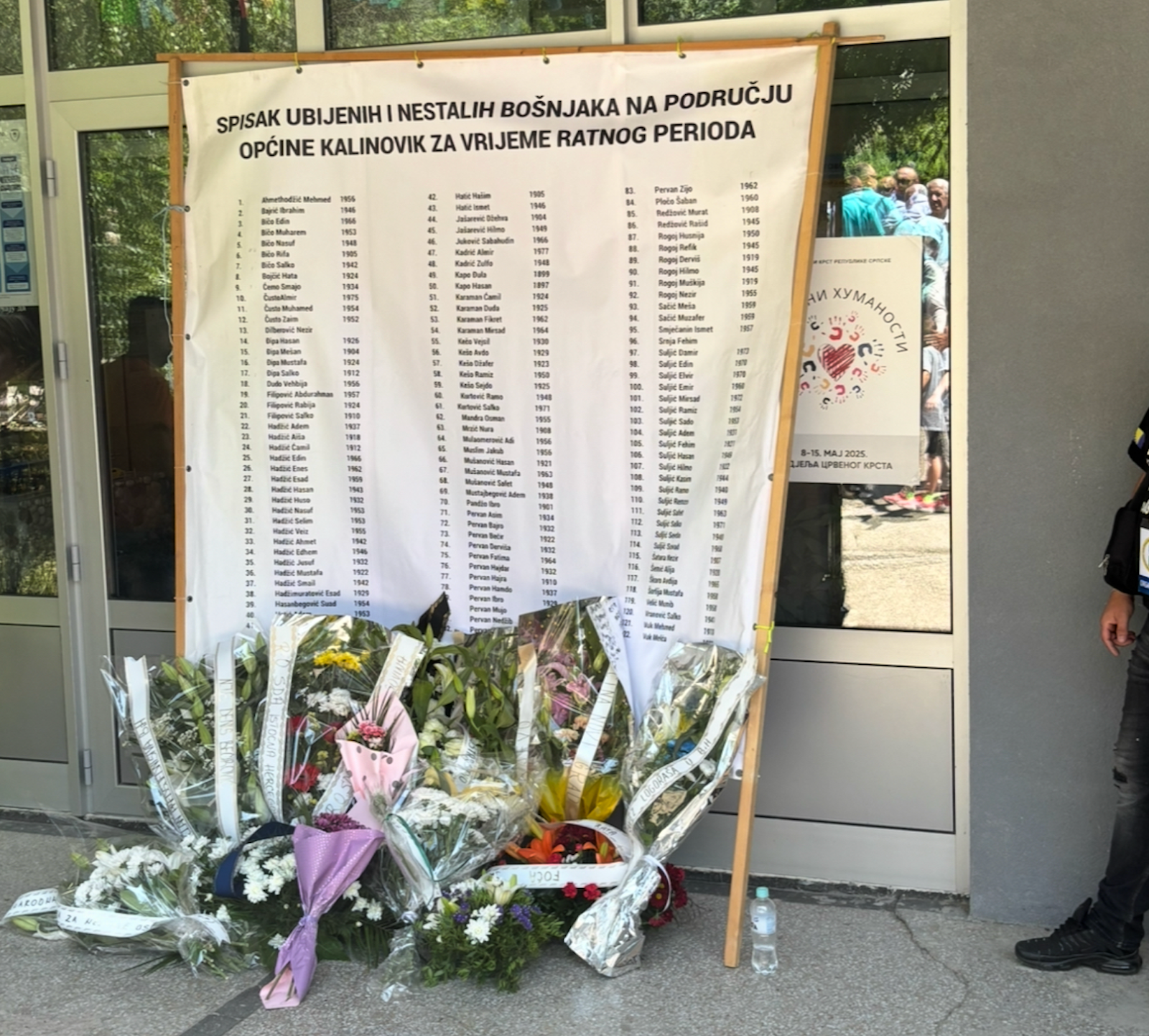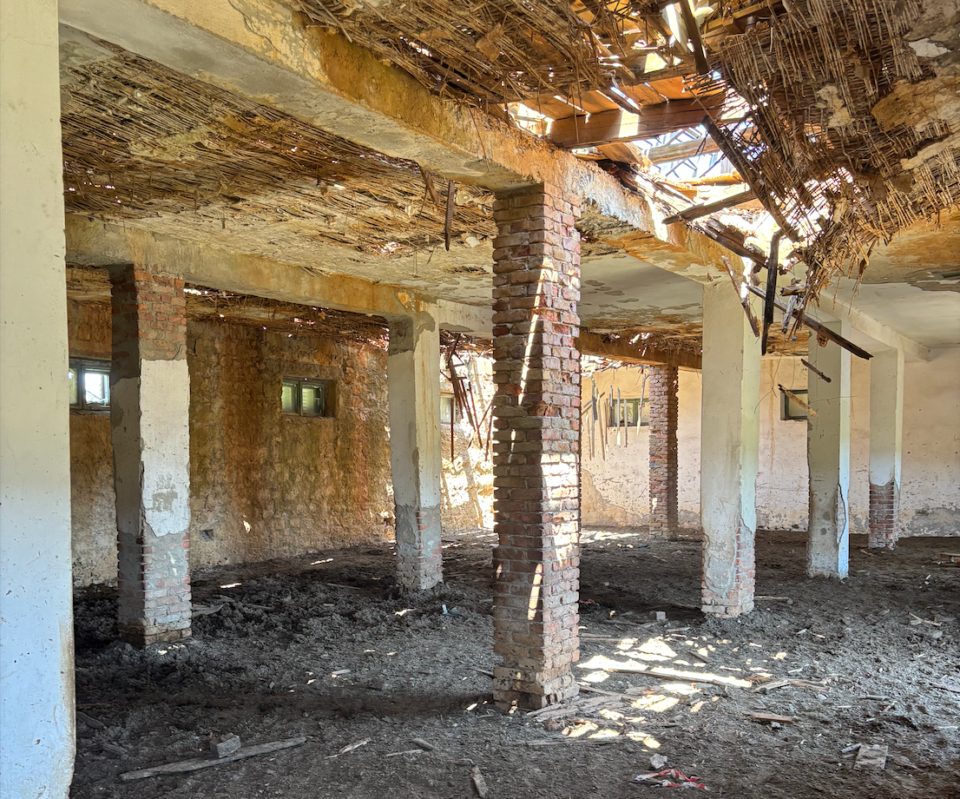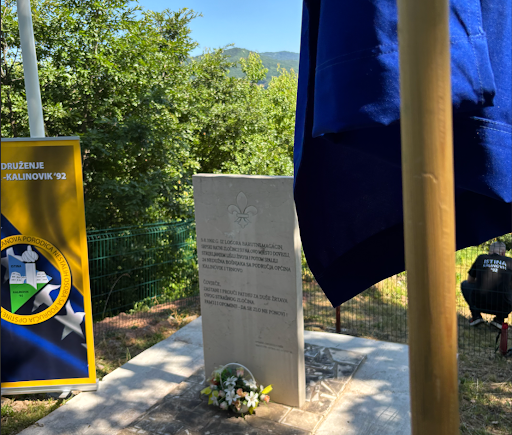
Each year in June, a caravan of victims, survivors, families, community and religious leaders, and—at times—outsiders, like a group of this year’s PCRC interns, gathers around Kalinovik, a small town in Republika Srpska, Bosnia & Herzegovina. Their reason for assembling? To remember the community’s Bosniak war crime and genocide victims, who were attacked, abused, and killed at the beginning of the war in Bosnia and Herzegovina. But this is more than a commemoration. It is an active protest against denial, against forgetting, and a demand for answers about the whereabouts of the 42 still missing.
This annual ritual of remembrance would not be possible without the efforts of the Association of Family Members of Missing Persons from the Area of the Municipality of Kalinovik “Truth-Kalinovik ‘92” and its leaders, like Samir Vranović, who continue to push forward despite the failures of transitional justice, ongoing political pressure, and the painful reality of entering sites and places that still deny the very acts that were committed and in that, their right to remember.
Our Journey Through Kalinovik
Our caravan trip through Kalinovik adopted a narrative format. Our stops were arranged to tell the story of how the town’s Bosniaks became the targets of ethnic persecution beginning in 1992, with key events underscored via speeches by our organizers. Each visit highlighted those murdered at a particular site, whether their bodies had been found, and named the local perpetrators who killed them, with speakers calling for justice, imploring nearby residents to reveal the locations of the missing, and affirming that, despite their suffering, Bosniaks would never stop living in Kalinovik. At the end of every session, moreover, participants were invited to lay flowers at the site, stopping for a moment of silence or to pray for those killed.
We visited six sites total, all of which taught us something new about the challenges facing those who wish to commemorate genocide victims within Bosnia. We highlight a few here. One of our first stops comprised a drive into Kalinovik itself. A massive monument to Ratko Mladić—born in the town and a convicted war criminal—stood at its entrance, demarcating it as a hostile space for those opposed to his actions. We stopped at the community’s elementary school, which children still attend today, and, through survivors, politicians, religious figures, and academics, we learned about how Kalinovik’s Bosniaks were forcibly imprisoned inside the building, killed, and subjected to sexual violence. That the space remained a school, without even a plaque to acknowledge its past, shocked us. It starkly illustrated the erasure, if not denial, of history and regular indignities that countless Bosniaks continue to endure in their current and former homes.
After this, we traveled to Barutni Magacin, a concentration camp where soldiers held and tortured the region’s Bosniak men. Its disintegrating buildings and soiled grounds—covered in manure left by cattle farmers brought into the site—spoke to its purposefully ignored status, despite efforts by survivors to transform it into a memorial center. We thus stood among the dilapidation, contemplating the targeted disrespect of it and the importance of saving this area, even as the inaction of local officials helped concretize its slow decomposition.

Once we finished our visit at the camp, we embarked on the “Road of Death”—a path encompassing sites where prisoners from Barutni Magacin were taken and killed by police officers and officials from the Kalinovik Public Security Station, alongside soldiers from the Kalinovik Tactical Group and related units of the Army of the Republika Srpska (VRS). Perhaps the most distinct locality we stopped at was the village of Ratine-Štala Tuzlaka, where we saw the only memorial included in the entire journey. There, on a steep hilltop, VRS soldiers shot and burned 25 Bosniaks, and the Association “Truth-Kalinovik ‘92” used its funds to erect a monument where the killing happened. When we asked why this place received a marker, we were told: “because it is out of the way and cannot be seen from the road.” Despite that somber statement and the difficult reality it reflected, it inspired us that survivors found a way to build a memorial, and it revealed how persistence in seeking this recognition can bear fruit, even if far down the line.

What Next?
The United Nations General Assembly’s 2014 standards on memory underscore that commemorations must provide public recognition of past crimes, not only as a form of justice for victims but as a safeguard against future violence and a foundation for redefining national unity. Yet in Kalinovik, and many places across Bosnia, the absence of meaningful reckoning—with both the atrocities committed and the enduring denial from those in power that enabled them—demonstrates how long the work of dealing with the past takes and how survivors and families of the victims of these crimes must carry the additional burden of advocating for their most basic right of commemoration.
As shown through the work of the Post-Conflict Research Center and the principles of peace education, sites where atrocities occurred can be transformed into spaces for truth, remembrance, nonviolence, and inter-ethnic dialogue to move toward reconciliation. Visiting Kalinovik today—standing in the remnants of a concentration camp or passing by a monument to war criminal Ratko Mladić—reveals a reality far from its opportunity. What is needed there, and across Bosnia, is not performative gestures by political leaders or the international community, but a reimagining—perhaps through political imagination—of how we engage with memory. Memorialization must be rooted in the voices, desires, and needs of survivors and communities most affected, and it must involve genuine and responsive engagement by those in power to foster true reconciliation. Indeed, a memory culture rooted in reconciliation offers the possibility of building a shared national identity—one based not on division or denial, but on recognition, accountability, and the collective aspiration for peace. Without this, Bosnia will not be able to share in this future collective identity.
_______________
We would like to thank Professor David Pettigrew for hosting us during this experience.
Authors: Bekir Hodzic and Adysen Moylan


